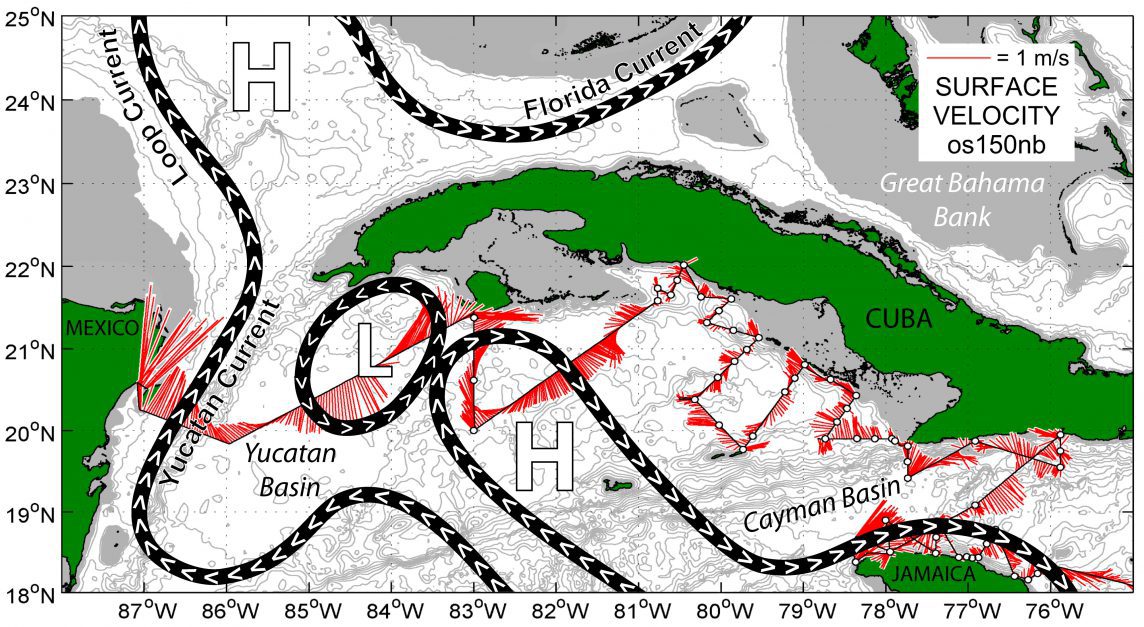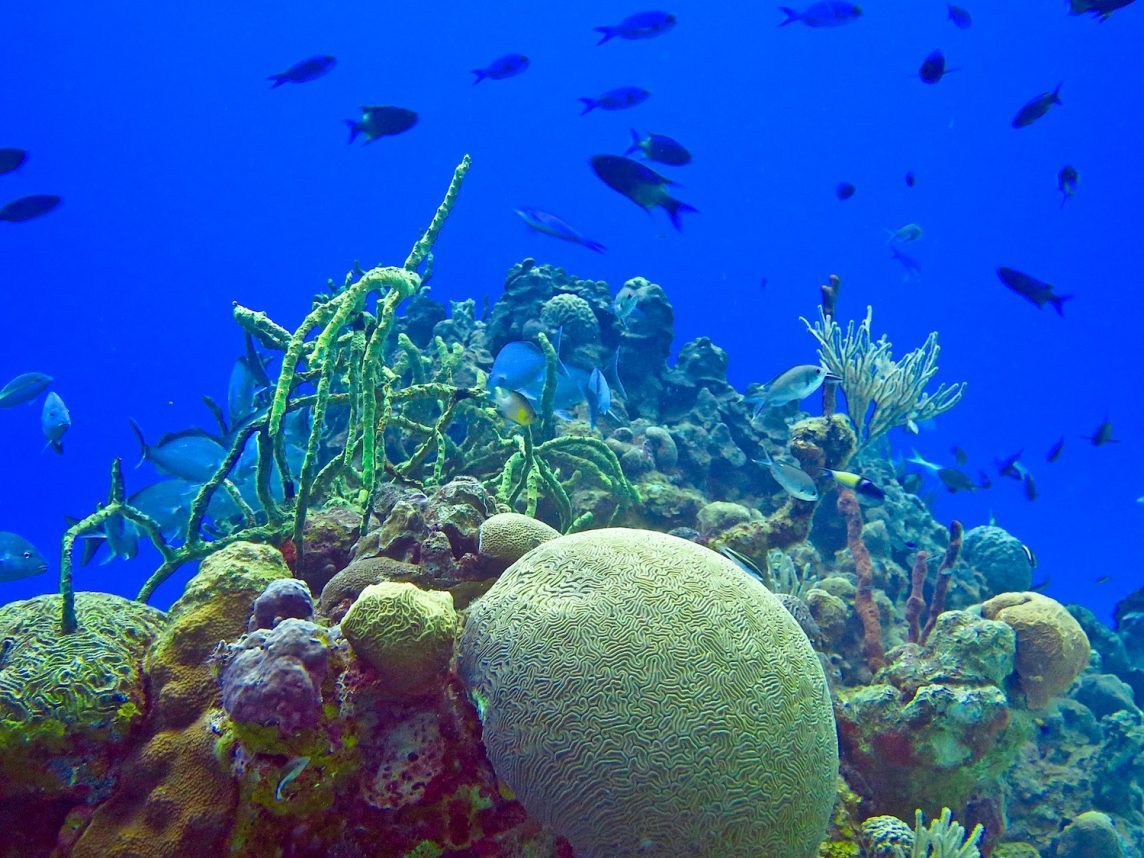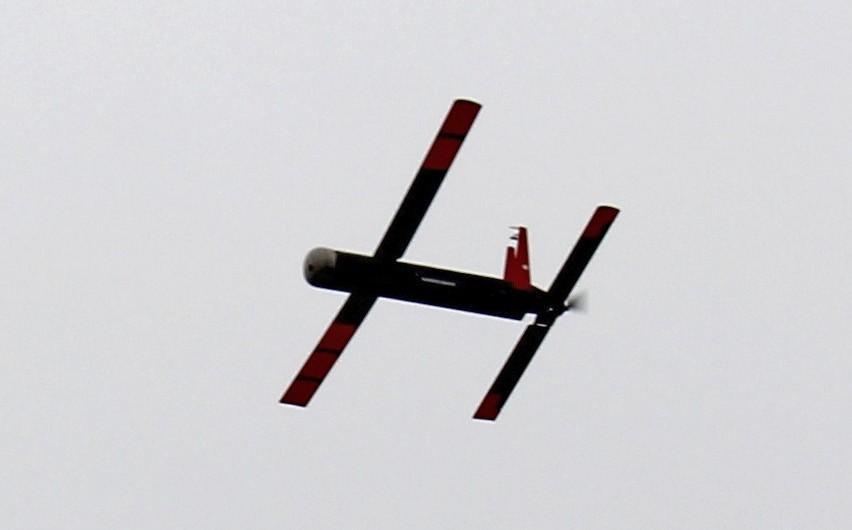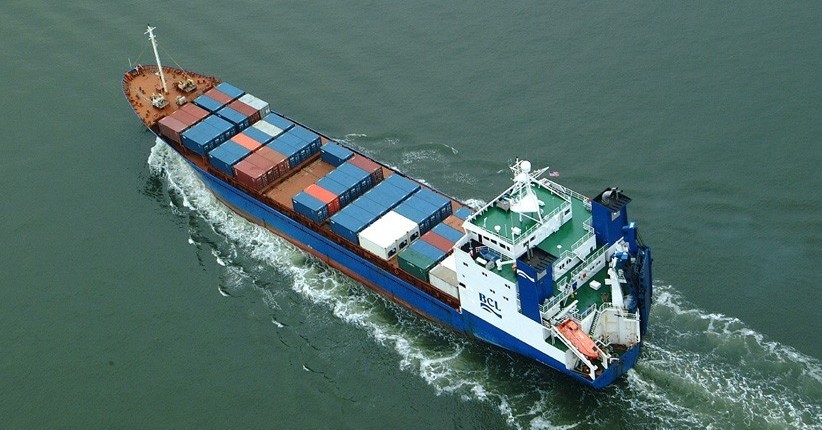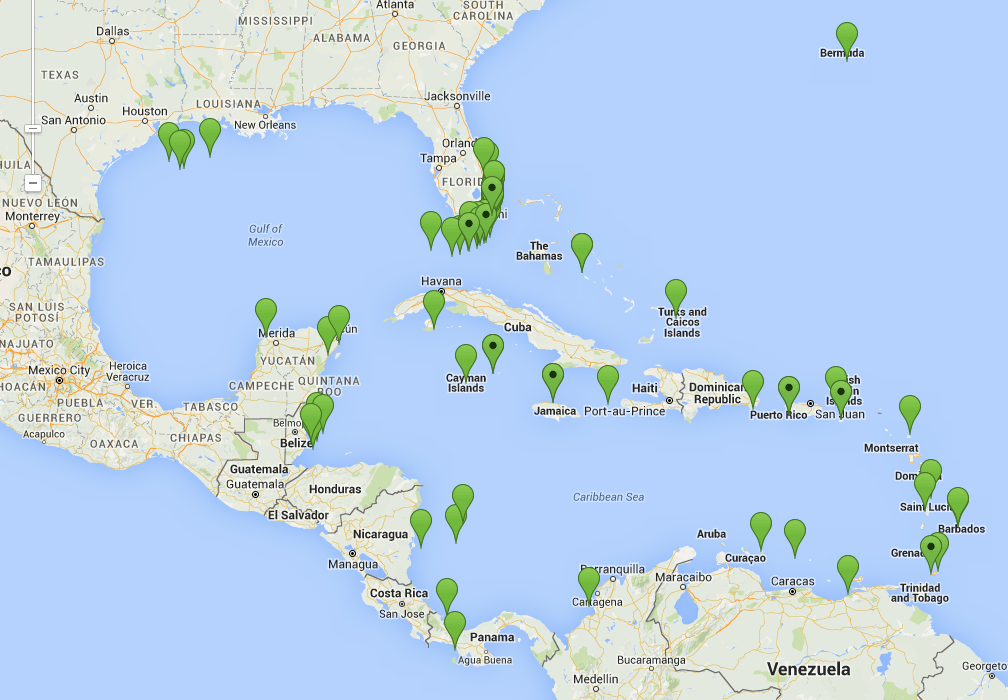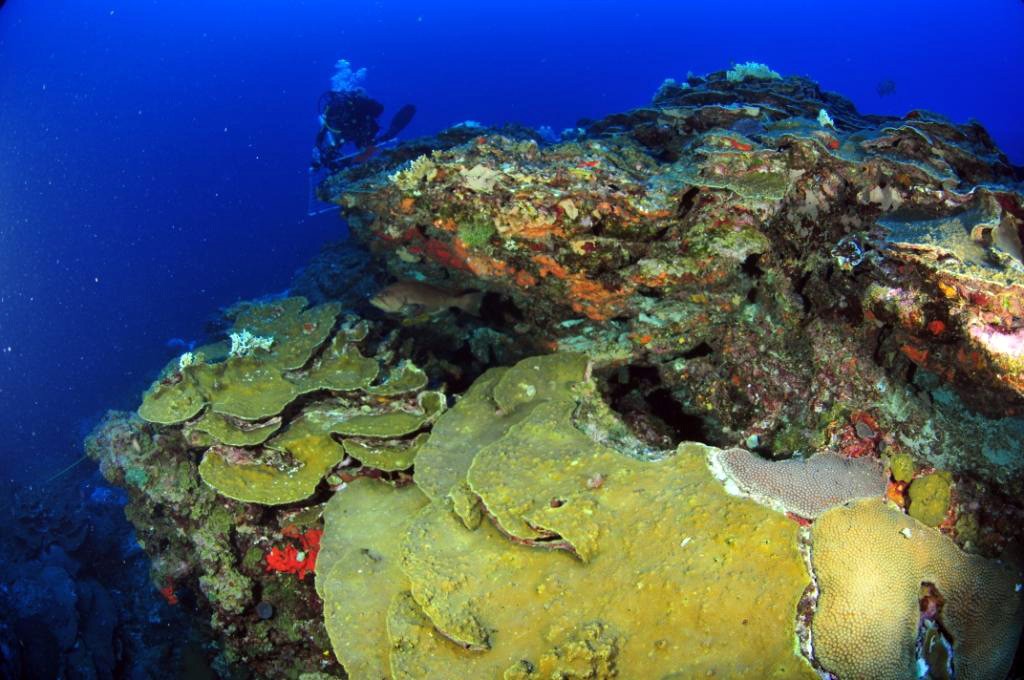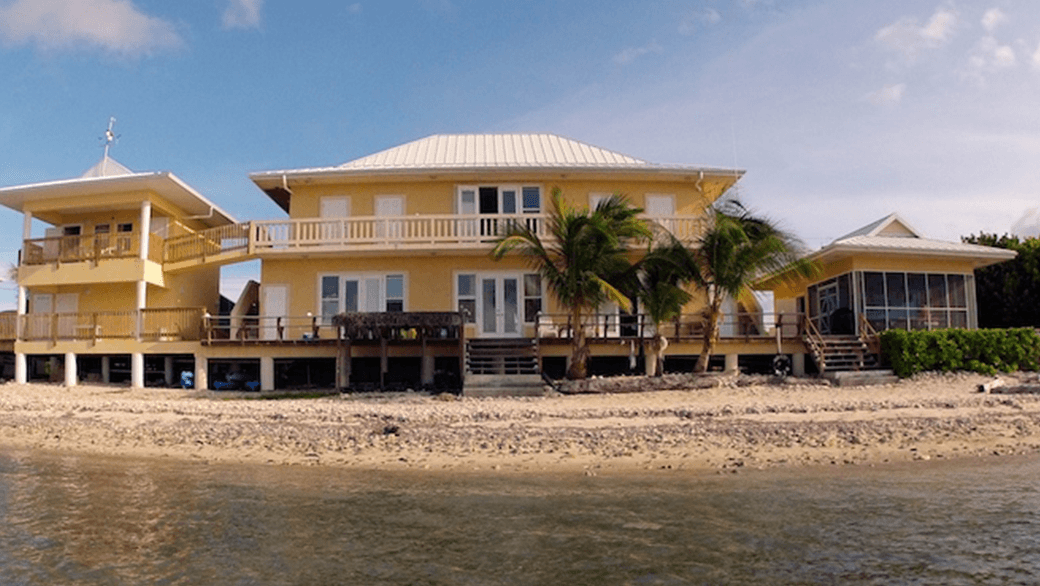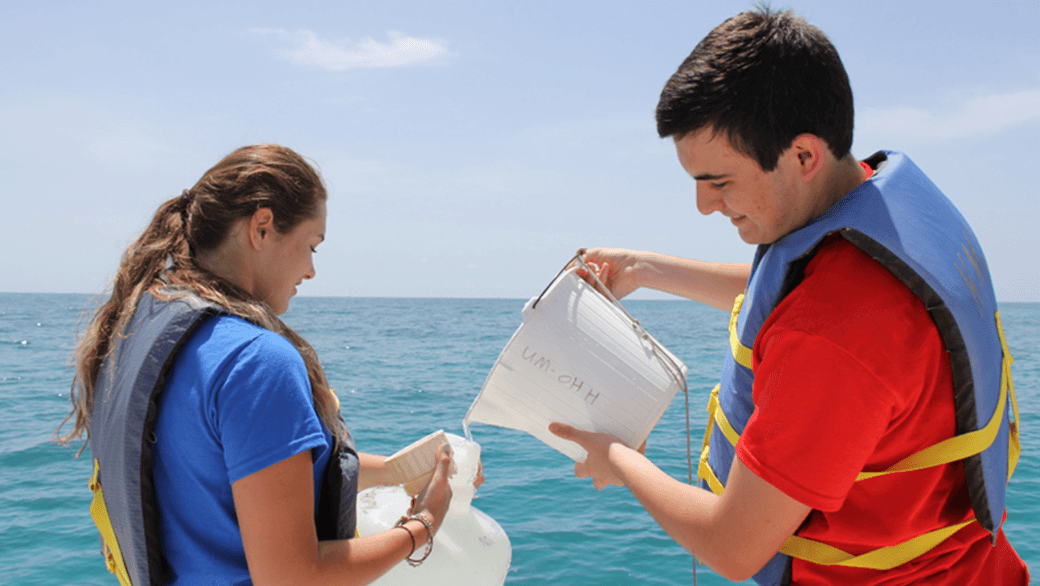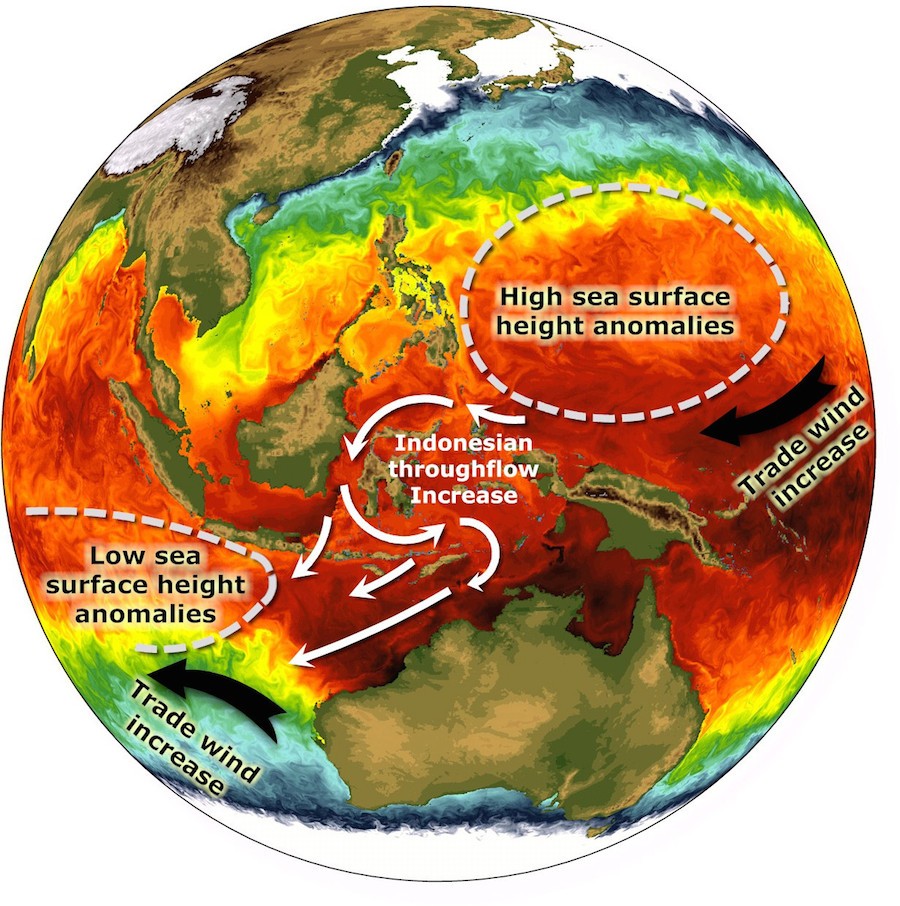A team of NOAA oceanographers sets sail from Miami aboard the NOAA Ship Nancy Foster on May 7th to investigate ocean currents and fish larvae distribution in the southern Gulf of Mexico and western Caribbean. The joint cruise between NOAA’s Atlantic Oceanographic and Meteorological Laboratory (AOML) and Southeast Fisheries Science Center (SEFSC) is a new chapter in a long-term effort that pools cross-line office resources to better understand the early life history and larval recruitment pathways of important fisheries in the region, including the ecologically important and commercially valuable Atlantic bluefin tuna.
Ocean Temperatures May Hold Key to Predicting Tornado Outbreaks
Tornadoes are one of nature’s most destructive forces. Recent violent and widespread tornado outbreaks in the United States, such as occurred in the spring of 2011, have caused significant loss of life and property. Currently, our capacity to predict tornadoes and other severe weather risks does not extend beyond seven days. Extending severe weather outlooks beyond seven days will assist emergency managers, businesses, and the public prepare the resources needed to prevent economic losses and protect communities. So how can scientists better predict when and where tornadoes are likely to strike, before the tornado season begins?
NOAA and Cuba Open Doors to Marine Science Cooperation
When Barack Obama becomes the first president to visit Cuba since Calvin Coolidge, his visit will highlight not only a new course in international relations, but showcase on-going scientific opportunities with the country only 90 miles off the Florida coast.
NOAA Advances Hurricane Research Technology with Improved Unmanned Aerial Vehicles
A team from NOAA and Raytheon successfully demonstrated recent advancements of the Coyote Unmanned Aircraft System (UAS) while completing a mid-flight launch from the NOAA P-3 Hurricane Hunter aircraft on January 7th. The successful flight verified new technology designed to improve Coyote’s ability to collect vital weather data to improve hurricane forecasts.
AOML-led Carbon Dioxide Sampling Effort Helps Quantify the Ocean’s Role in Global Carbon Budget
Researchers with the Global Carbon Budget released their annual update for the global carbon budget in December 2015, revealing carbon dioxide (CO2) emissions from fossil fuels increased slightly in 2014 (+0.6%), but are projected to decline slightly (by est. -0.6%) in 2015. The global oceans serve as a natural buffer, offsetting increased emissions by absorbing an estimated 27% of human-produced CO2 from the atmosphere in 2014. Data collected, in part, from long-term surface ocean CO2 monitoring efforts, funded by NOAA’s Climate Program Office and the Ocean Acidification Program, indicate that the oceans removed about 10.7 billion tons of CO2 from the atmosphere in 2015.
New Virtual Stations Enhance Coral Monitoring Efforts in Caribbean
AOML’s Coral Health and Monitoring Program (CHAMP) rolled out a new data source in October as part of its online data query tool. Optimally Interpolated Sea Surface Temperatures, or OISSTs, are data from microwave satellite observation platforms, products that are sourced from Remote Sensing Systems. Whereas other sea surface temperature sources might be missing data due to orbital gaps or non-ideal environmental conditions such as cloud cover or rainfall, the OISST platform corrects for these errors to provide a complete, daily sea surface temperature map that can benefit coral health and monitoring efforts worldwide.
AOML Establishes New Sites to Monitor Ocean Acidification in Gulf of Mexico
Members of AOML’s Acidification, Climate, and Coral Reef Ecosystems Team (ACCRETE) recently traveled to two remote reef locations to expand the National Coral Reef Monitoring Program’s (NCRMP) network of sentinel climate and ocean acidification monitoring sites. The newly established sites, located in the Flower Garden Banks and the Dry Tortugas, will provide researchers with additional data and insights into the ocean’s changing chemistry and the progression of ocean acidification, as well as the ecological impacts of these variables across the Caribbean basin and the Gulf of Mexico.
AOML Oceanographers to Participate in New Summer Lecture Series
This summer, AOML will be diving into a new outreach initiative with the Central Caribbean Marine Institute, a coral reef research organization based in the Cayman Islands. From June through August, NOAA oceanographers from AOML will give a series of talks on various oceanographic topics to the institute’s staff and students participating in the National Science Foundation’s (NSF) Research Experiences for Undergraduates program at the institute’s Little Cayman Research Centre (LCRC).
Central Caribbean Marine Institute is a non-profit organization whose mission is to conduct and facilitate research, education, outreach and conservation programs that will sustain marine diversity. They support key research into addressing global issues such as climate change, marine protection, fisheries management and coral reef impacts. Every summer, the institute hosts undergraduate students at the LCRC as part of the NSF funded research program. Students work with mentors to design, implement, and present research projects within the institute’s research themes of coral reef stress, climate change, ocean acidification, and coral reef resilience and restoration.
This lecture series provides students with an opportunity to gain insight into current coral reef research programs in order to help them refine their summer projects. The series also offers networking opportunities for students and staff and fosters relationships with the AOML research community. Topics will range from ocean-reef interactions, microbiology, ecosystem-based management, and impacts to coral health. Funding for the lecture series is being provided by CCMI.
“I always get bored with minute-detail subjects like molecular studies, but Dr. Chris Kelble’s lecture on the science to inform ecosystem-based management was all about the bigger picture. It’s a topic that I would love to get into,” said Brian Griffiths, an REU student from the University of Delaware. “Dr. Kelble was the first scientist I’ve encountered so far that thinks like I do. He was a great role model to have met!”
In addition to providing lectures, NOAA oceanographers will be teaming up with CCMI scientists and the National Centers for Environmental Information to examine variations of temperature and light at the local scale over the coral reefs surrounding Little Cayman Island. Collecting and analyzing this important data will enhance NOAA’s coral reef ecological forecasting tools and help evaluate the adequacy of regional-scale observations in monitoring for environmental threats to the reefs. This data will also assist other research projects being carried out by various research groups on the Little Cayman reefs including projects focused on constructing a global climate record using coral core samples, connecting water conditions to algal growth on the reefs, and investigating why some reefs are more resilient than others over small distances.
Located on Little Cayman Island, the LCRC is situated next to some of the most biologically diverse reef systems on earth. These reefs are particularly important to coral reef scientists as they are largely unaffected by local human and development impacts. This isn’t the first time NOAA oceanographers will collaborate with the Little Cayman-based research center. NOAA’s Coral Reef Early Warning System (CREWS) established a monitoring station on the reef adjacent to the research center in 2009. CREWS stations are scattered across the Caribbean and contain a suite of oceanographic and atmospheric sensors that monitor environmental conditions in an effort to provide scientists with early warning of climate-related events such as coral bleaching.
See below for a complete schedule of the lecture series:
June 23 – 29
– “Synergistic Effects of Eutrophication and Elevated SST in the Early Life Stages of Two Caribbean Corals”
July 30 – August 3
– “Molecular Microbiology in the Marine Environment: Biocomplexity, Microbial Source Tracking, and Metagenomic Observations”
– “Interactions Between Ocean Health and Human Health”
– “Coral Research at NOAA/AOML’s Ocean Chemistry and Ecosystems Division”
– “Supporting NOAA Coral Reef Research: the Cooperative Institute for Marine and Atmospheric Studies”
August 3 – August 7
– “Spatial Gradients in Carbonate Chemistry and Their Influence on Ecosystem Processes”
– “Science to Inform Ecosystem-Based Management”
– “Sloshing and Mixing Between Reef and Ocean: Physical Processes Impacting Connectivity and Thermal and Biogeochemical Variability for Cayman Corals”
AOML Enlists Citizen Scientists for International Ocean Sampling Day 2015
Researchers with AOML’s Environmental Microbiology Lab joined a global effort to sample the smallest members of the ocean ecosystem on June 21 during International Ocean Sampling Day. Organized and led by the European Union’s MicroB3 organization and the Ocean Sampling Day Consortium, Ocean Sampling Day (OSD) is a simultaneous sampling campaign of the world’s oceans and coastal waters. These cumulative samples, related in time, space and environmental parameters, contribute to determine a baseline of global marine biodiversity and functions on the molecular level.
What are scientists looking for?
The organisms of scientific interest for the OSD campaign include microscopic Bacteria, Archaea, Fungi, Protists and viruses, collectively known as microbes. Microbes make up 98 percent of the biomass in Earth’s oceans and are responsible for most of the biological activity that takes place within it. Microbes are found everywhere, from the ocean surface to deep within rocks beneath the ocean floor. They are pervasive and can evolve rapidly in response to changes in the environment. In fact, many scientists consider microbes to be a “canary in the coal mine”, signaling local and global changes in the oceans. It is, therefore, important to acquire information from across the globe on this vast community of organisms, against which future changes can be observed and measured.
2014: The first global OSD effort
During the 2014 Ocean Sampling Day event, over 180 scientific teams participated from all continents ranging from subtropical waters in the Caribbean to extreme environments in the Antarctic Ocean. On this day, more than 600 people all around the world took water samples from the ocean in order to identify the microbes within. Scientists used the data collected to support projects focusing on environmental microbiology parameters that describe the relationship between marine microbes and human health and the health of our local marine ecosystems. This data will also provide insights to the ocean economy through the identification of novel, ocean-derived biotechnologies.
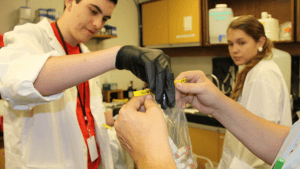
Researchers with AOML’s Environmental Microbiology Lab joined a global effort to sample the smallest members of the ocean ecosystem on June 21 during International Ocean Sampling Day. Organized and led by the European Union’s MicroB3 organization and the Ocean Sampling Day Consortium, Ocean Sampling Day (OSD) is a simultaneous sampling campaign of the world’s oceans and coastal waters. These cumulative samples, related in time, space and environmental parameters, contribute to determine a baseline of global marine biodiversity and functions on the molecular level.
What are scientists looking for?
The organisms of scientific interest for the OSD campaign include microscopic Bacteria, Archaea, Fungi, Protists and viruses, collectively known as microbes. Microbes make up 98 percent of the biomass in Earth’s oceans and are responsible for most of the biological activity that takes place within it. Microbes are found everywhere, from the ocean surface to deep within rocks beneath the ocean floor. They are pervasive and can evolve rapidly in response to changes in the environment. In fact, many scientists consider microbes to be a “canary in the coal mine”, signaling local and global changes in the oceans. It is, therefore, important to acquire information from across the globe on this vast community of organisms, against which future changes can be observed and measured.
2014: The first global OSD effort
During the 2014 Ocean Sampling Day event, over 180 scientific teams participated from all continents ranging from subtropical waters in the Caribbean to extreme environments in the Antarctic Ocean. On this day, more than 600 people all around the world took water samples from the ocean in order to identify the microbes within. Scientists used the data collected to support projects focusing on environmental microbiology parameters that describe the relationship between marine microbes and human health and the health of our local marine ecosystems. This data will also provide insights to the ocean economy through the identification of novel, ocean-derived biotechnologies.
Where are AOML scientists sampling?
This year, AOML will coordinate and sample ten OSD sites across the country. In addition to the 2014 sites in the Florida Keys, Ft. Lauderdale, Tampa Bay, La Jolla, California, and Horn Island, Mississippi, AOML will coordinate five new sites spread across the Florida peninsula from Pensacola to Miami. Sampling sites are expected to be monitored long-term as part of the international Genomic Observatories Network and the resulting database will be accessible to the public.
MyOSD: The citizen scientist component
OSD organizers have amended the citizen science component for this year’s event, allowing individuals from all over the globe to collect samples in their backyard using handy sampling kits. This component, called MyOSD, gives individuals the chance to help scientists unravel the mysteries of the marine microbial world by collecting important environmental data such as latitude, longitude, temperature, salinity, pH and wind speed.
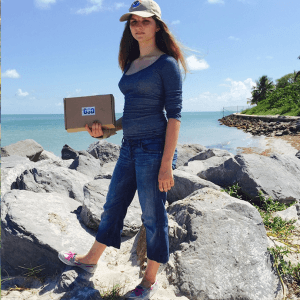
A citizen scientist from MAST Academy samples a site on Key Biscayne with a MyOSD kit. Image Credit: NOAA
AOML has coordinated and provided kits to a number of citizen science groups in Florida and California, including organized youth groups, citizen science organizations, educational centers, and outreach groups. Samples collected will represent a variety of different marine ecosystems including the open ocean, beaches, coral reefs, and estuaries.
We are excited to be working with a number of citizen scientists this year to expand our sampling effort and help contribute to our understanding of the ocean’s biodiversity said AOML. “
-Microbiologist Dr. Chris Sinigalliano
A baseline for the future
With the combined effort of researchers and citizen scientists, OSD 2015 continued the initiative to collect and share crucial information that can be used as a reference for generations of experiments to follow in the coming decades. Additionally, the data analysis procedures being developed for OSD are driving the field forward, but it is clear that much remains to be discovered about the microbial world. Scientists hope that such large-scale projects that provide an “ecological snapshot” become increasingly more common as they are essential for understanding the complexity of Earth’s systems.
Originally Published by Edward Pritchard, 2015
Indian Ocean Plays Key Role in Global Warming Hiatus
The earth is warming, but temperatures in the atmosphere and at the sea surface that steadily rose in the last half-century have leveled off and slowed in the past decade, causing the appearance of an imbalance in Earth’s heat budget. Scientists are looking into the deep ocean to determine where this additional heat energy could be stored, and recently traced a pathway that leads to the Indian Ocean.
In a study published May 18 in Nature Geoscience, oceanographers from the University of Miami’s Rosenstiel School, Cooperative Institute for Marine and Atmospheric Studies (UM/CIMAS), NOAA and their colleagues identified a key mechanism that explains the apparent contradictions associated with the recent global warming hiatus. Building upon previous studies that suggest enhanced heat uptake in the tropical Pacific Ocean as the major source of the imbalance, the new study tracked this excess heat from the Pacific to the Indian Ocean via Indonesian pathways.
Since the 1950s, global average surface air temperatures have increased steadily, with the warming attributed to greenhouse gases originating from human activities. Since the start of the 21st century however, global surface warming has almost stalled. This contradicts with the amount of net radiation entering Earth at the top of the atmosphere, which continues to suggest an increasingly warming planet. The slowdown of surface warming was the focus of a series of studies that sought to identify and track the causes of this process.
Researchers initially pegged the tropical Pacific as the major source of heat uptake, theorizing that the basin was storing a large portion of the global heat imbalance over the last decade, thereby causing the atmosphere to warm less. Natural climate variability processes such as El Niño/Southern Oscillation (ENSO), a cycle of warm and cold sea surface temperature in the tropical Pacific Ocean, drive wind patterns and ocean currents across the region. Since the turn of the century, the cold phase of ENSO, known as La Niña, has persisted, increasing the uptake of warm surface waters in the subtropics. This process and others have enhanced the uptake of heat from the atmosphere to the top 2,000 ~ 3,000 feet of the ocean.
While uptake in the Pacific as a result of La Niña-like conditions may have answered the initial question regarding the heat missing from the atmosphere, findings from the recent study indicate that Pacific heat has been slowly decreasing and that the excess heat has been transported elsewhere.
“When I first saw from the data that Pacific heat was going down, I was very curious and puzzled,” says the study’s lead author Dr. Sang-Ki Lee, a climate researcher with UM/CIMAS and NOAA’s Atlantic Oceanographic and Meteorological Laboratory.
Results from the study suggest that the excess heat is being stored in the Indian Ocean, which has seen an unprecedented rise in heat over the past decade. Researchers studied observations going back to 1950 and noticed that the Indian Ocean heat uptake stayed relatively low until 2003 or so. From that point forward, observations indicated that heat began to build in the Indian Ocean and there was no evidence to support that the source was from the atmosphere. By running simulations from a global ocean-sea ice model to track the pathway of heat, researchers found that the heat originally stored in the Pacific was transported by a strong ocean current, known as the Indonesian Throughflow, and ended up in the Indian Ocean. The heat flux into the Indian Ocean via the Indonesian pathway means that the Indian Ocean is increasingly important in modulating global climate variability and is now home to 70 percent of all heat taken up by global oceans during the past decade.
The study helps resolve an important debate regarding the warming hiatus. Scientists theorize the Pacific played a role in the warming hiatus, yet all observations indicated that total heat in the Pacific basin had not increased as expected. This study reveals that the Pacific was an intermediary in the heat storage process, but not the final destination, explaining the lack of change in Pacific heat.
Lee has several thoughts about future effects of this warm deep ocean water. In its current location, Lee said it’s possible that the warm water in the Indian Ocean could affect the Indian Monsoon, one of the most important climate patterns in the world that affects more than 1 billion people. What it means for future El Niño cycles is not immediately clear. However, Lee noted that the warm water in the western Pacific, which provides the energy needed to produce intense El Niño events, has been partially discharged into the Indian Ocean, suggesting weaker El Niño events in the near future. Lee also indicates that the heat content is likely to continue moving with global ocean currents and may find its way into the Atlantic basin in the coming decades.
“If this warm blob of water in upper Indian Ocean is transported all the way to North Atlantic, that could affect the melting of Arctic sea ice,” Lee said. “That can also increase hurricane activity and influence the effects of drought in the U.S, but future studies are required to validate these hypotheses.”
Originally Published in May 2015 by Edward Pritchard
